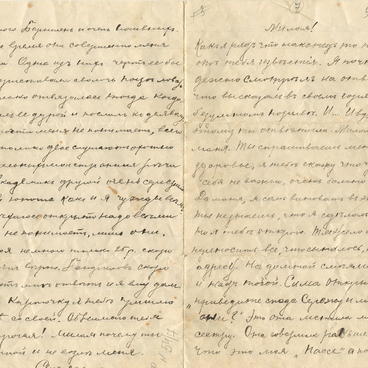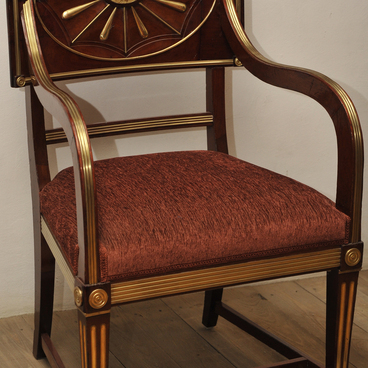Sergei Esenin purchased this jacket during a foreign trip to Europe and the US that he took with Isadora Duncan in 1922—1923. Sergei Esenin and Isadora Duncan arrived in France in the summer of 1922. The poet immediately started looking for networking opportunities in the publishing industry. In Paris, he met a Belgian writer Franz Hellens, who agreed to translate the Confessions of a Hooligan poem collection into French and prepare its publication together with Maria Miloslavskaya. The book came out in September, 1922.
“When I first saw him, his elegant style of dress and absolute ease in behaviour confused me at some point. However, I saw his true colours soon enough. This elegant dressing, this sophisticated refinement that he seemed to deliberately emphasise were nothing more than another one, and indeed not the most fascinating, aspect of his character, in which strength was inseparable from this wonderful tenderness. Being bound to nature by blood, he exhibited a combination health and the completeness of natural existence. It seems one could say that both faces of Esenin were equally authentic. This farmer was an impeccable aristocrat”, Hellenz remembered.
The jacket is mentioned in several of Esenin’s poems and is most commonly associated with urban lifestyle, which was used as a contrast to rural life by the poet. For instance, Snowdrift, Piled Up, Is Now Brittle And Callous… reads as follows:
Much have I seen and much have I travelled,
Much have I loved, and suffered, too.
I have caroused, stirred up trouble and revelled,
And haven’t seen anyone as worthy as you.
Now having slipped off my shoes and my jacket,
Warming myself by the bedside again,
I have revived and, like in my childhood,
I wish for good luck, and I hope not vain…
“When I first saw him, his elegant style of dress and absolute ease in behaviour confused me at some point. However, I saw his true colours soon enough. This elegant dressing, this sophisticated refinement that he seemed to deliberately emphasise were nothing more than another one, and indeed not the most fascinating, aspect of his character, in which strength was inseparable from this wonderful tenderness. Being bound to nature by blood, he exhibited a combination health and the completeness of natural existence. It seems one could say that both faces of Esenin were equally authentic. This farmer was an impeccable aristocrat”, Hellenz remembered.
The jacket is mentioned in several of Esenin’s poems and is most commonly associated with urban lifestyle, which was used as a contrast to rural life by the poet. For instance, Snowdrift, Piled Up, Is Now Brittle And Callous… reads as follows:
Much have I seen and much have I travelled,
Much have I loved, and suffered, too.
I have caroused, stirred up trouble and revelled,
And haven’t seen anyone as worthy as you.
Now having slipped off my shoes and my jacket,
Warming myself by the bedside again,
I have revived and, like in my childhood,
I wish for good luck, and I hope not vain…

